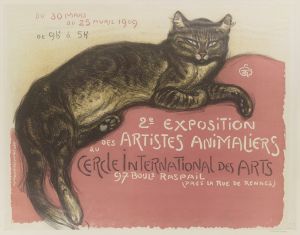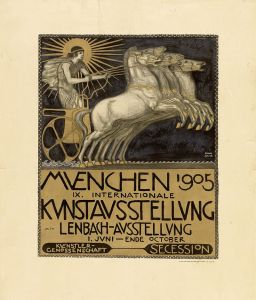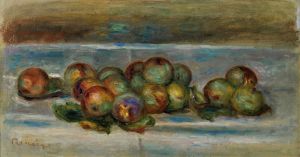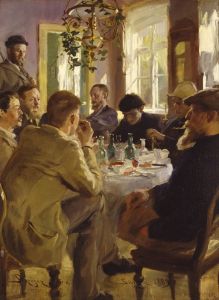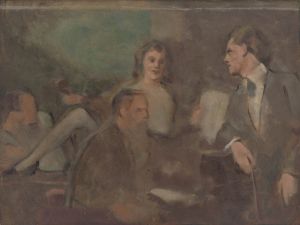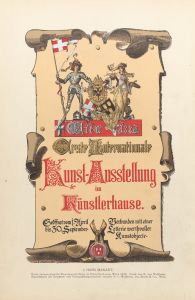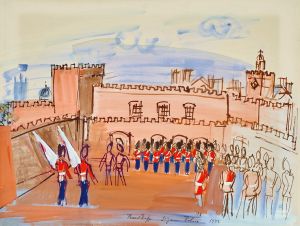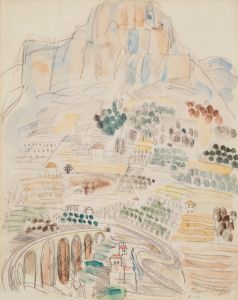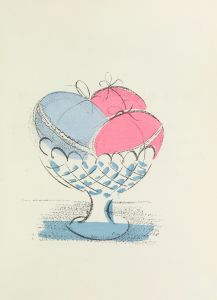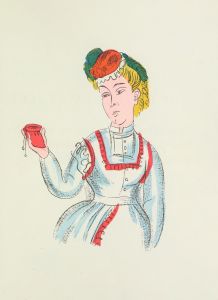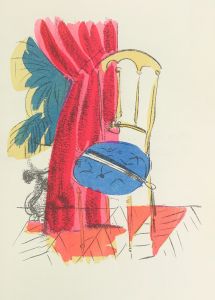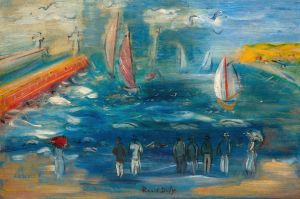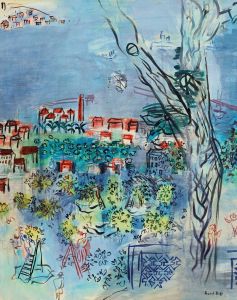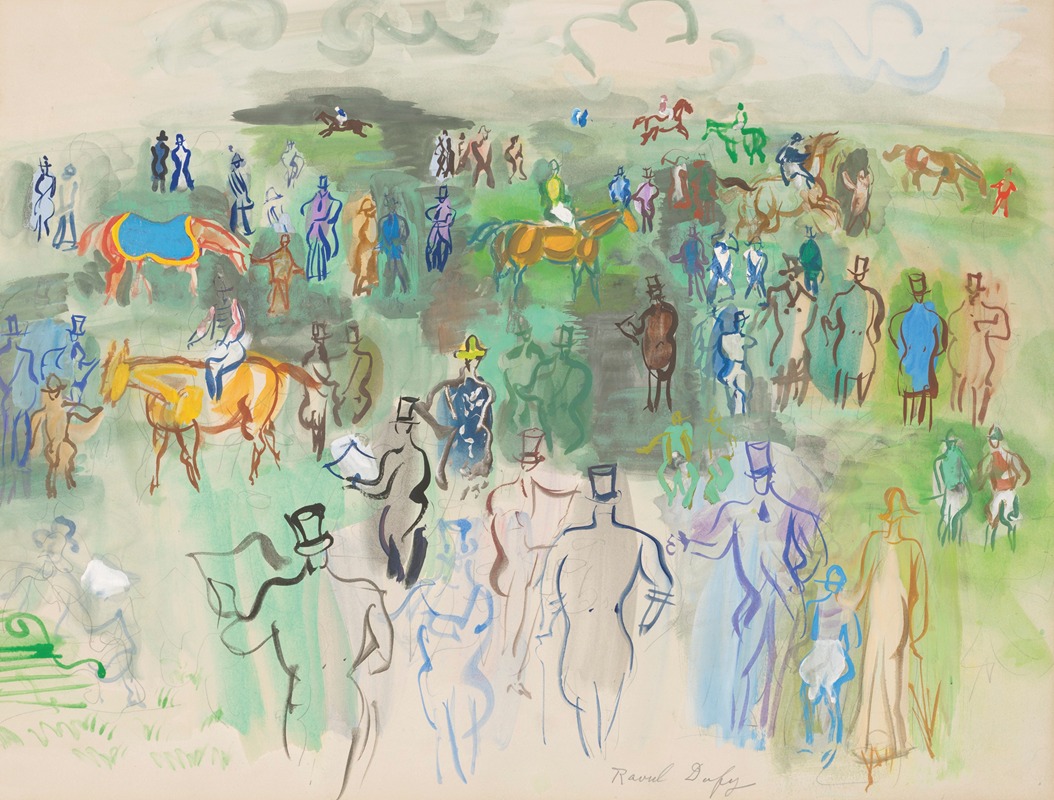
Elégants et élégantes sur la pelouse
A hand-painted replica of Raoul Dufy’s masterpiece Elégants et élégantes sur la pelouse, meticulously crafted by professional artists to capture the true essence of the original. Each piece is created with museum-quality canvas and rare mineral pigments, carefully painted by experienced artists with delicate brushstrokes and rich, layered colors to perfectly recreate the texture of the original artwork. Unlike machine-printed reproductions, this hand-painted version brings the painting to life, infused with the artist’s emotions and skill in every stroke. Whether for personal collection or home decoration, it instantly elevates the artistic atmosphere of any space.
Raoul Dufy was a French Fauvist painter known for his colorful and decorative style, which often depicted leisure activities and social events. One of his works, "Elégants et élégantes sur la pelouse," exemplifies his vibrant approach to capturing the essence of early 20th-century French society.
Raoul Dufy was born on June 3, 1877, in Le Havre, France. He studied at the École des Beaux-Arts in Paris, where he was influenced by the Impressionists and later by the Fauvist movement, which emphasized bold colors and painterly qualities. Dufy became known for his cheerful and vivid depictions of social scenes, landscapes, and regattas.
"Elégants et élégantes sur la pelouse" translates to "Elegants and Elegant Ladies on the Lawn." This painting reflects Dufy's fascination with the leisure activities of the French bourgeoisie. The scene captures a group of elegantly dressed men and women enjoying a day outdoors, likely at a social gathering or event. The setting is a lush, green lawn, which serves as a backdrop for the figures, who are depicted in a lively and animated manner.
Dufy's use of color in this painting is characteristic of his style. He employs a bright and varied palette, with bold blues, greens, and reds that bring the scene to life. The brushwork is loose and fluid, giving the painting a sense of movement and spontaneity. This approach is typical of Dufy's work, which often conveys a sense of joy and celebration.
The composition of "Elégants et élégantes sur la pelouse" is carefully arranged to draw the viewer's eye across the canvas. The figures are positioned in a way that suggests interaction and conversation, creating a dynamic and engaging scene. Dufy's attention to detail in the clothing and accessories of the figures adds to the painting's charm and elegance.
Dufy's work is often associated with the Fauvist movement, which he embraced after being inspired by the works of Henri Matisse and André Derain. Fauvism is characterized by its use of vibrant colors and expressive brushwork, both of which are evident in "Elégants et élégantes sur la pelouse." Dufy's ability to capture the spirit of the time through his use of color and composition made him a prominent figure in the art world.
Throughout his career, Dufy explored various themes and subjects, but he consistently returned to scenes of leisure and social gatherings. His work often reflects the optimism and vitality of the early 20th century, a time of great social and cultural change in France. "Elégants et élégantes sur la pelouse" is a testament to Dufy's skill in capturing the essence of his era through his distinctive artistic style.
Raoul Dufy continued to paint and exhibit his work until his death on March 23, 1953. His legacy endures through his vibrant and joyful depictions of French society, which continue to be celebrated and admired by art enthusiasts around the world. "Elégants et élégantes sur la pelouse" remains an excellent example of Dufy's ability to convey the beauty and elegance of everyday life through his art.





